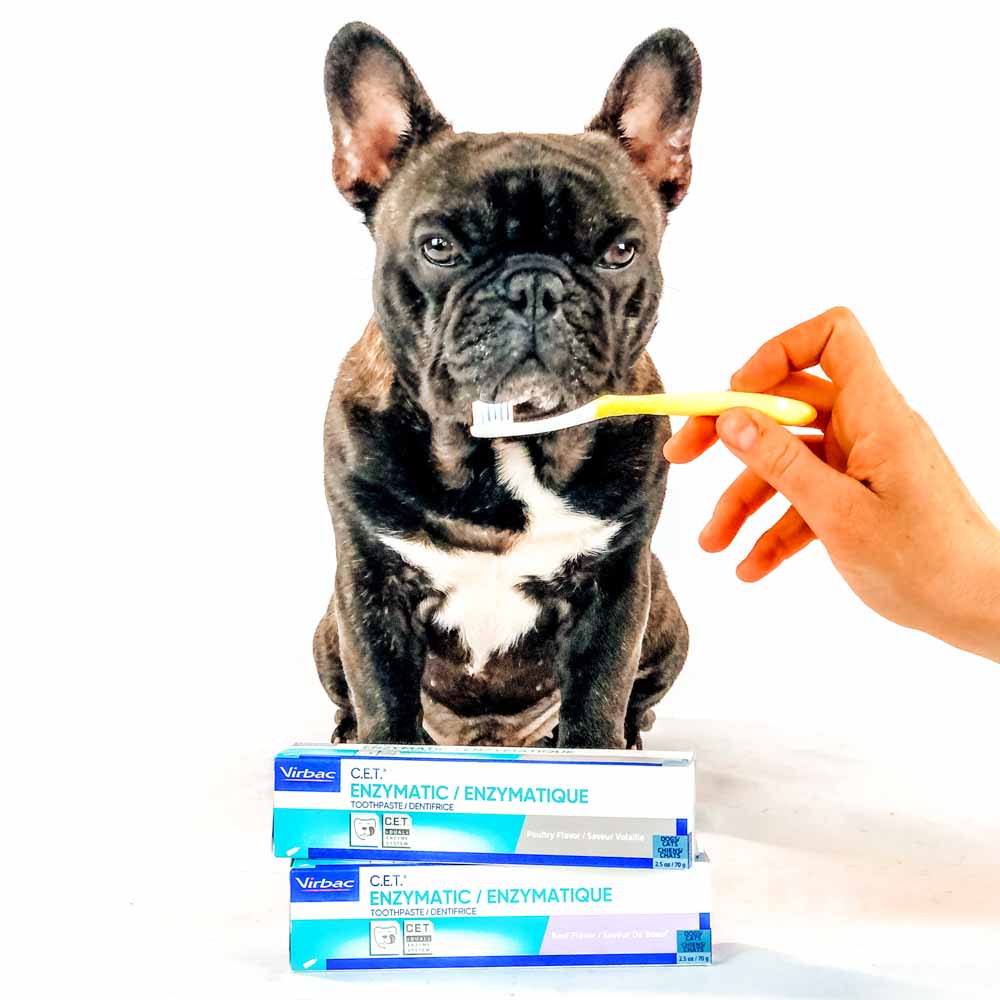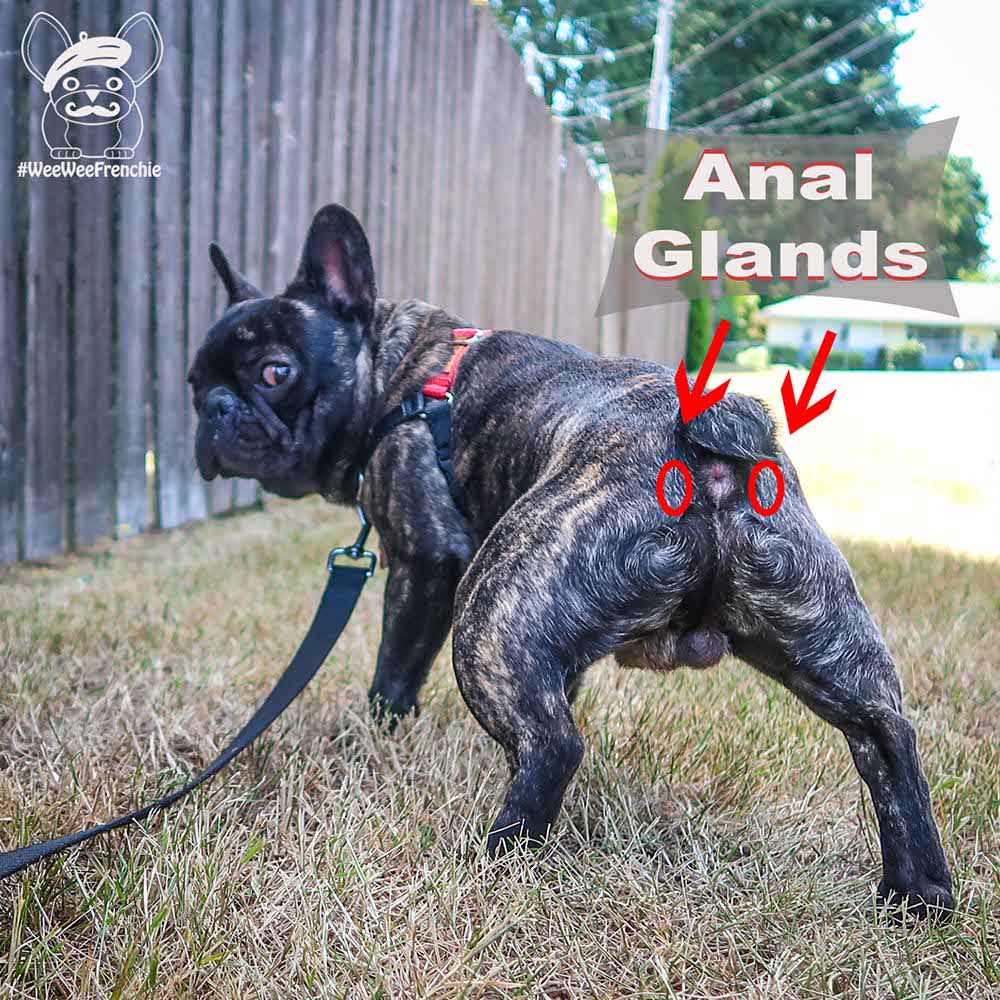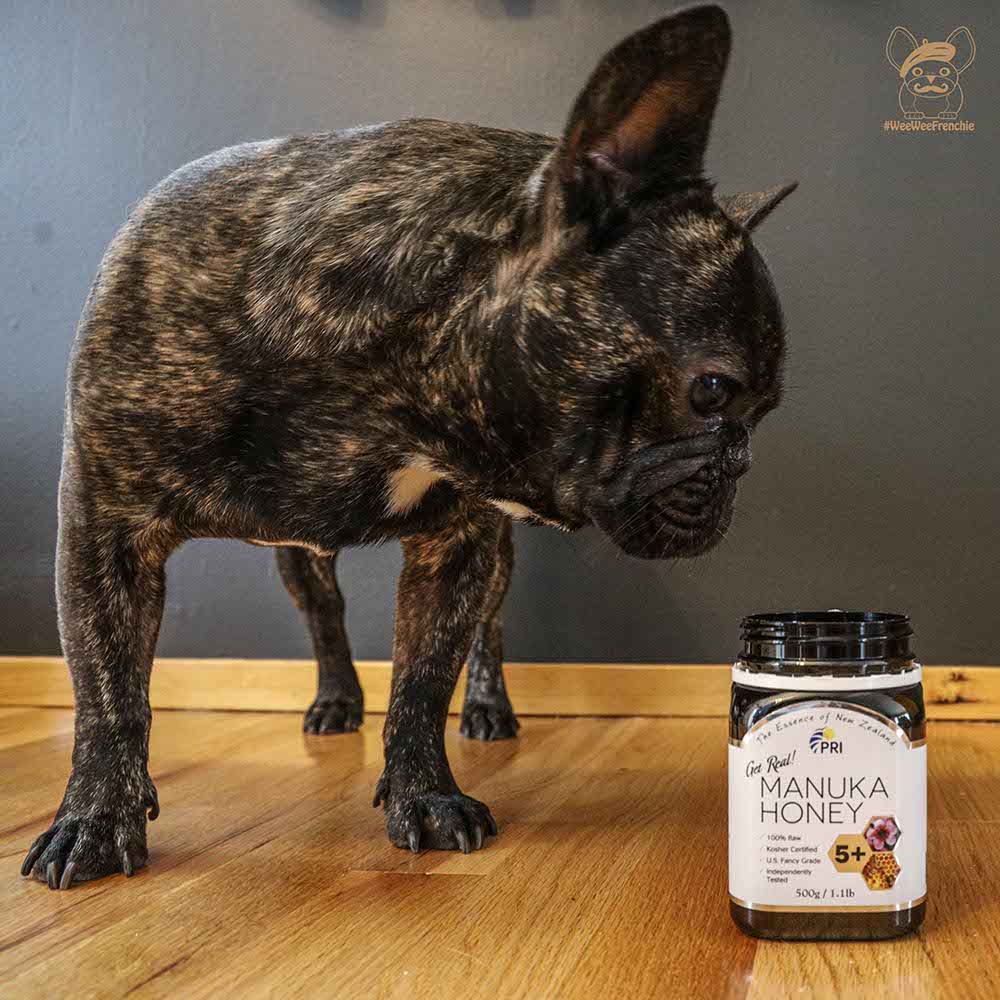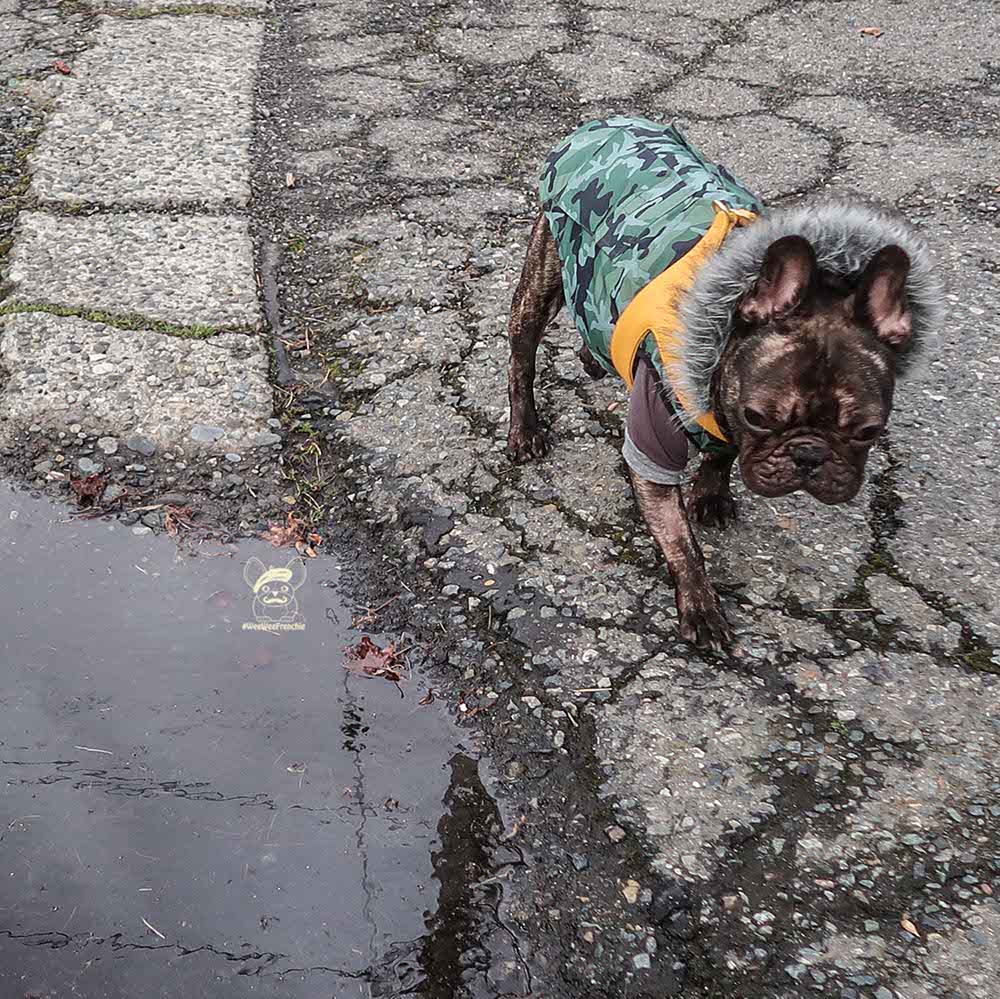What You Need to Know about Flying with Your Dog
After spending months preparing for a trip, buying plane tickets, and carefully packing bags, you finally realize that there was one detail that was forgotten. What about your dog? No need to worry, just bring him along!
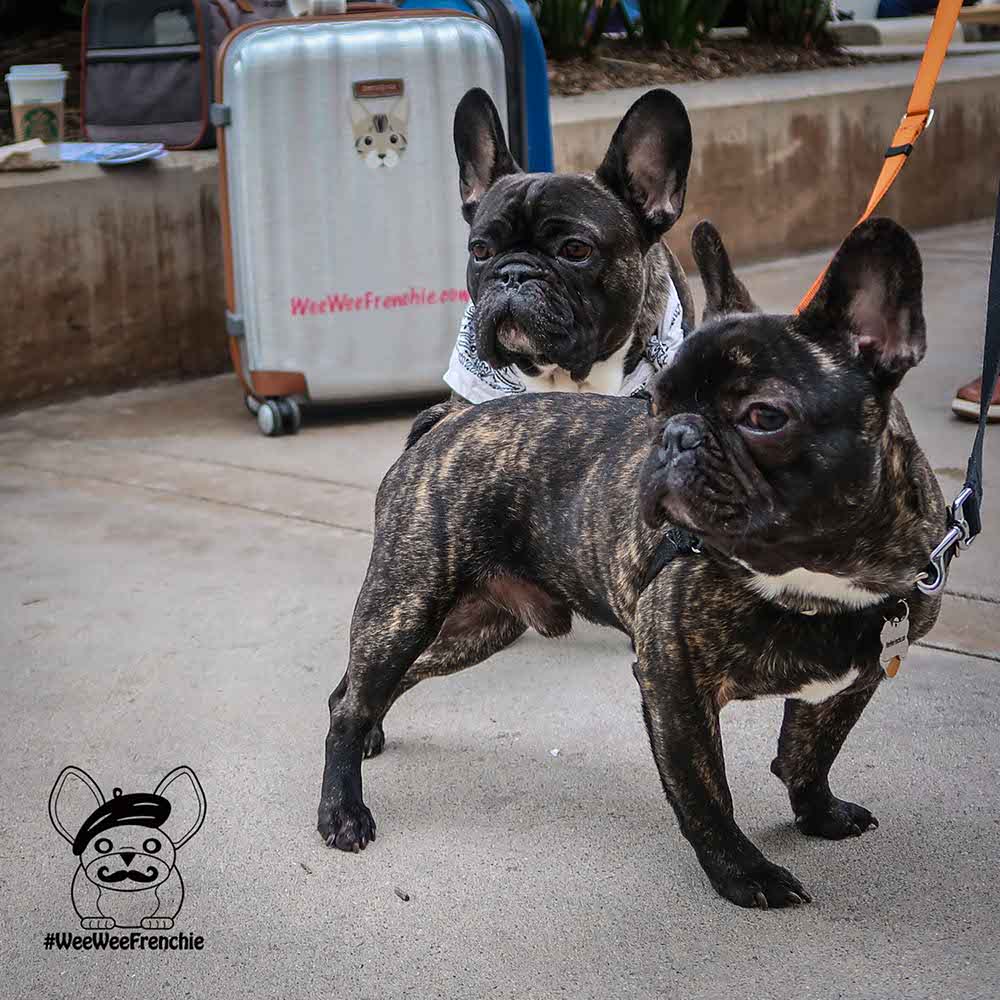
After spending months preparing for a trip, buying plane tickets, and carefully packing bags, you finally realize that there was one detail that was forgotten. What about your dog? No need to worry, just bring him along! Most of you reading this are probably wondering if it is really that easy, and with some strategic planning, it is very easy to bring your pup along on the journey.
OPTIONS FOR FLYING WITH YOUR DOG
First and foremost, any brachycephalic dog could be compromised when flying. Their unique respiratory systems, due to their short snouts, mean that they are more sensitive to climate and pressure changes. ALL BRACHYCEPHALIC DOGS SHOULD FLY IN THE PLANE CABIN! (And never in an overhead bin either!) You may have heard of people putting their brachycephalic dog under the plane in the pet area but this is grossly irresponsible since this could result in death.
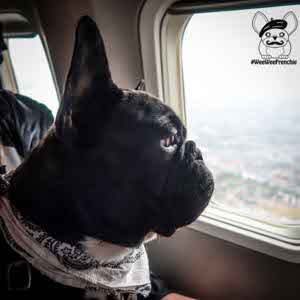
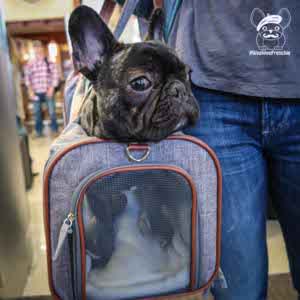
Your dog can fly in the cabin for an additional fee but will need to fit in a carrier underneath the seat in front of you. This can be a challenge if you have a bigger dog. For our smaller French bulldog, Phoenix (17.5 pounds as of April 2018), he barely fits in his carrier. Using a pet carrier is fine for Phoenix for a short flight but he has limited mobility. Since Phoenix is a growing boy, he will not be able to fly under the plane seat for much longer. When he gets bigger, he will have to fly with us differently sans pet carrier.
Our larger French bulldog, Cooper, who is almost 30 pounds, flies as an emotional support animal (ESA). ESA animals fly free of charge and fly without using a pet-carrier, either sitting at your feet or in your lap. For emotional support animals a travel letter is required by a licensed medical health professional or a doctor. Every airline is different so make sure to check the airline’s pet and ESA travel policy on what supporting documents are needed.
WHEN TO CONTACT THE AIRLINES
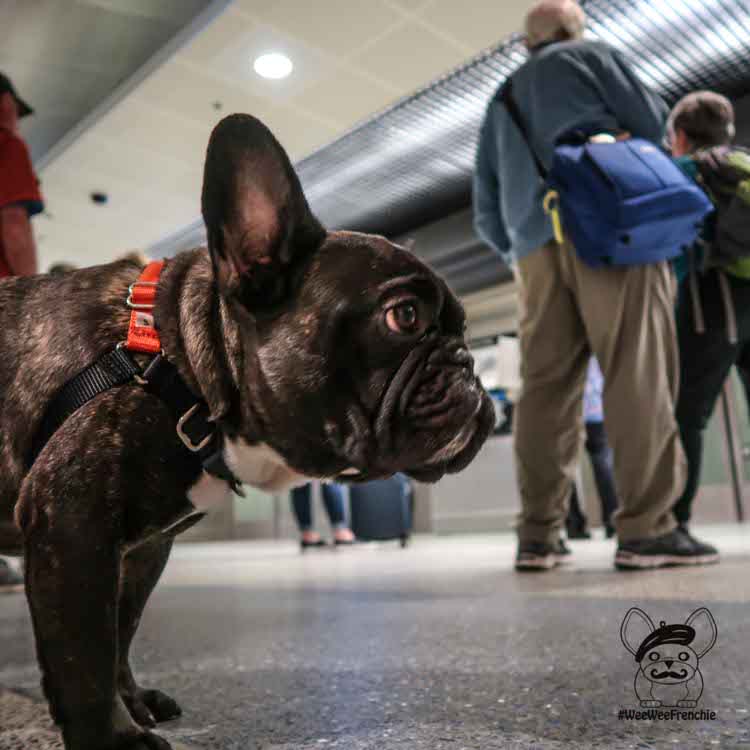
When buying plane tickets for you and your dog, call the airline as soon as possible to get your dog registered on the flight. If your dog is traveling under the seat in front of you (in a pet carrier), an additional fee will be charged. There are only a limited number of pets that can be on a plane for a given flight so call the airline as soon as buying your tickets to guarantee that your furry friend has a spot on the flight. If your dog is an ESA animal, even though the airlines does not charge an additional fee, the airlines will need forewarning that you are bringing your dog. From experience, I would buy plane tickets at least two months in advance, and call the airline as soon as your ticket purchase is complete. There are more dogs flying these days, and you will want to make sure your dog is not left behind.
Prior to your flight, call the airline (again) at least 48 hours in advance to ensure your dog is checked in for the flight. We know that Alaska Airlines recently changed their policy asking that all dogs have a health certificate from a licensed veterinarian within 10 days of travel, in addition to ESA documentation (if your dog is an emotional support animal). Arrive for your flight at least two hours in advance because you will need to go to the special assistance counter to show your dog’s medical documentation and ESA paperwork (if applicable). Depending on how full your flight is will depend on how long you will have to wait in line, which will be at least 30 minutes or longer (arrive early).
FEEDING AND AIRPORT DOG RELIEF AREAS
Flying with dogs can be a challenge depending on sleep and feeding schedules. Based on our experience, earlier morning flights have been easier because the dogs are still tired, not hungry yet, and willing to sleep after getting to the airport. Also, it is better to hold off on feeding your dog until after arriving to your destination. This limits bathroom breaks and possible indigestion issues that could occur.
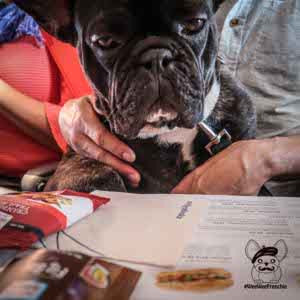
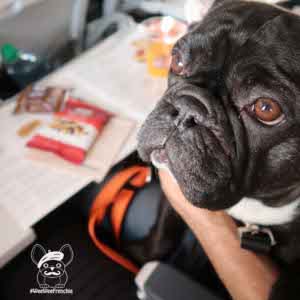
There are dog relief areas in the airport but most are disgusting, usually with a six foot by eight foot area of fake grass that is overflowing with dog urine. Some airports are more advanced than others with larger pet facilities with grassy outdoor areas, while others are in a small side-hallway. Depending on the cleanliness of the facility, your pet may decide not to use the area. Some facilities have been disgusting, and even if my pet needed to go potty, he has looked at me with resentment and his eyes said, “Would you go pee on that?” It smelled so bad that I agreed with my pet and got him outside to the nearest grass/rocky area where I knew he would urinate.
Since all airports can be different, limiting water and food prior to a flight is usually easiest but if it cannot be avoided, bring along some back-up potty pads just in case if the pet relief area is inadequate or disgusting. This allows for you to go into a handicapped stall, lay down the potty pad in the stall, and let your pet do their business. It is that easy, and you have avoided an embarrassing moment in the middle of the airport!
WHAT TO PACK FOR YOUR DOG
Packing for your dog can be a challenge because you will want some of their familiar toys and treats from home. There are some items you will need to pack for a carry-on bag, while also bringing items for their checked-bag. Items to bring in their checked bag include: small dog blanket (for sleeping) or small pet bed, a few dog bandanas or shirts (this creates fun travel pictures), treats, food, pet bowls for food and water, 3-5 favorite toys, towel if beach travel is included, and canine sack carrier if long walks will be part of your exclusion. For a carry-on bag, necessities are: a bandana or small kitchen towel to help wipe drool or food off your pup’s face, treats, a portable water bowl and water, a few toys, one small stuffed animal (we will explain this later), dog’s medical papers and/or ESA documentation, dog tags, leash, collar/harness, wet wipes (these come in handy for any messes), and potty pads.
Once at your gate, make sure you have all necessary items for your dog. This will be your last chance to buy any items that you could have forgotten like water or stuffed animals. Limit feeding your dog until after the flight. Limit water intake but make sure your dog has access to water when needed to avoid dehydration.
GENERAL TIPS
When onboard the flight, the dog usually adjusts quickly to his surroundings. Most dogs are relaxed if you are relaxed. Some things that we have learned from our flights:
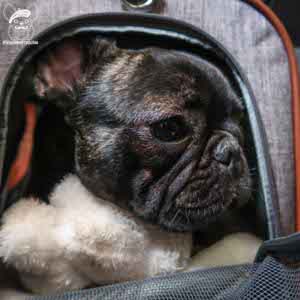
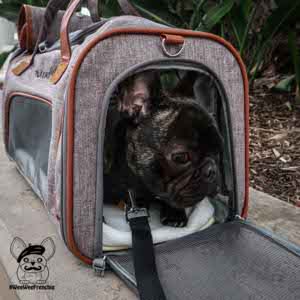
- Bring a small stuffed animal to use as a pillow in the pet carrier. Phoenix took up almost the entire carrier, which could make it difficult for him to find a cozy sleeping spot. By putting a small stuffed animal on top of his front feet, Phoenix was able to rest his head on top of his stuffed animal, allowing for more ergonomic sleeping for a dog who was in a cramped space. This allowed him to sleep comfortably almost the entire flight.
- Bandanas are essential for a food motivated dog. Cooper is highly food-motivated so the second the flight attendants arrived in the aisle with the snack and beverage cart, Cooper was sitting at attention waiting to be served! Almost instantaneously the drool began to seep from his cheeks as he envisioned all of the treats he would eat. For this reason, having a bandana dedicated to drool clean-up has been essential! Attaching the bandana to the dog makes it easy to use but keeping a bandana in a coat-pocket or purse can also be easily retrieved for use.
- A small kitchen towel has also come in handy on flights when Cooper has not been able to get settled. On Cooper’s first flight experience, he seemed overwhelmed and confused about what was happening. He was sitting on our laps during the flight but every noise rattled him, and he looked up every time a passenger walked down the aisle. We took a small kitchen towel that we brought, and gently laid the towel over Cooper’s head to limit his sight. Within minutes, Cooper lowered his head and went to sleep. It was a simple thing to do.
- Make sure that dogs can use the animal relief facilities shortly before and after the flight. Even with being on short flights that are 2-2.5 hours in duration, the anxiety and pressure changes can limit how long your dog can “hold-it.”
- If using a rental car, putting the dog’s blanket or pet bed in the back seat helps to comfort the dog, making travel easier. Even though your dog is on a fun trip, having some familiar items from home can ease stress.
FINDING PET-FRIENDLY ACCOMMODATIONS
Finding a dog friendly hotel can be a challenge but we used a website called BringFido.com. This website has a list of pet-friendly accommodations, as well as user reviews, that allows you to choose a hotel that will meet your dog’s needs. BringFido.com has confirmed the pet policy at every hotel listed so you do not have any surprises during your trip (and if there is a surprise, let them know because you will be reimbursed for any extra charges accrued). There are no booking fees when using this site, and a portion of their proceeds go back to animal charities and rescues to help save the homeless pet population.
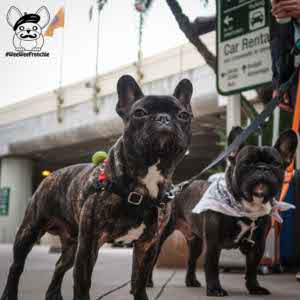
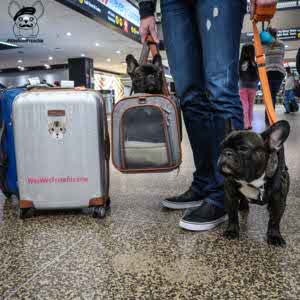
Flying with your pet can be stressful but with adequate preparation, flying with your pet can be fun and anxiety free. With each flight, it gets easier to tailor the trip to your dog’s needs. Most people love seeing a dog in the airport, which seems to help relieve stress and anxiety of fellow passengers. Flying with a dog may not be for everyone but trip planning with your pets in mind can be an easy way to build fun family memories that you will talk about for years to come (bring your camera). Hopefully our tips and tricks will help you be aviation ready so your dog can enjoy the friendly skies.

